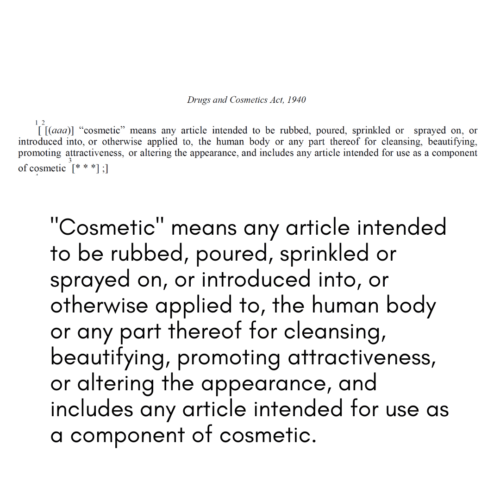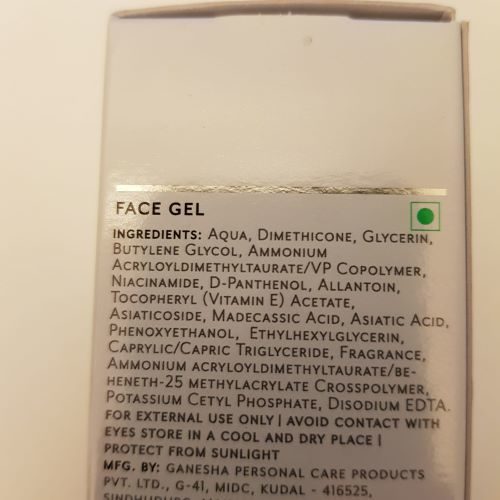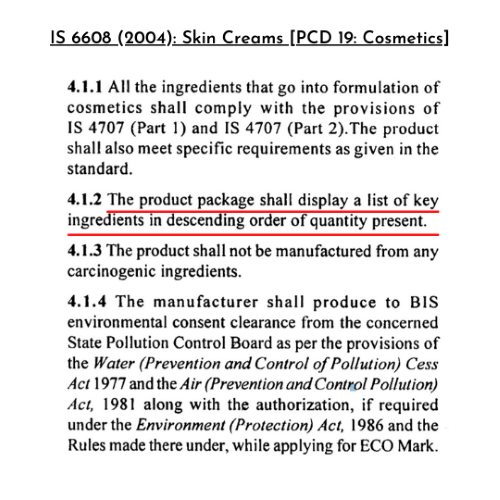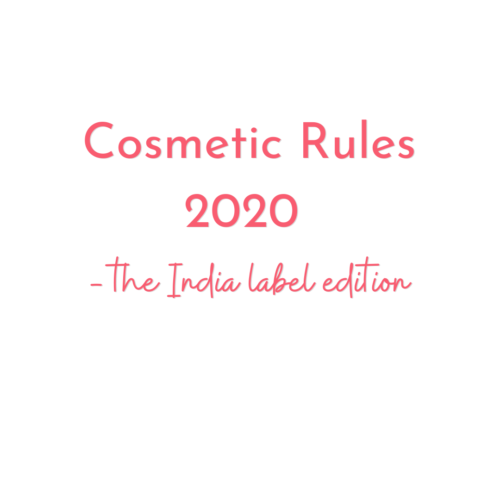At the outset, I want to tell you that if you are confused by labelling in India and how it doesn’t instil any confidence, then honestly, its because the rules governing this area are really poorly drafted. (In plain English, its not your fault – the regulations are at fault).
What is a cosmetic?

Clearly, all skincare products fall under the definition of a cosmetic, including sunscreen. A cosmetic is not a drug, but is regulated under the “Drugs and Cosmetics Act 1940.” Ayurvedic skincare products are also regulated under the same act, but are not cosmetics. This is so confusing and I think its best illustrated by two labels – an Ayurvedic compliant label and a normal skincare product.
Ayurvedic compliant label

Forest Essentials are complying with the requirement to disclose ingredients with their botanical name and list the percentage quantity of each. If you are thinking that the ingredients don’t add up to 100% it’s because I think brand’s take advantage of a loophole that only requires disclosure of Key Ingredients.
Cosmetic compliant label

As you can see, all the ingredients are listed according to their INCI name without disclosure of percentages.
What has changed?
The previous requirement (e.g.,) of skin cream was as follows:

What has changed?
In December 2020, the government of India introduced Cosmetic Rules 2020, which reads as follows:

What do I think of the changes in Cosmetic Rules 2020?
There are notable changes. The first change which I have not yet eluded to are that: cosmetics that are tested on animals cannot be imported into India AND such testing is not permitted as part of cosmetic manufacture.
In English, that means “NO ANIMAL TESTING.”
Secondly, its absolutely fantastic news that cosmetics must disclose all ingredients and this an improvement over “Key Ingredients” which many cosmetics were using to NOT disclose 100% of all ingredients.
But on the other hand, the utility of this rule is limited because in a country such as India, small SKU units sell the most. Its just not 5ml shampoo sachets that sell, but its also 12ml kumkumadi oil and 20g face creams that I am talking about. So many lip balms are 20grams, which means they squarely fall under this exemption.
What would I want in an ideal world?
Disclosure of all ingredients using INCI nomenclature (see below for what INCI is)
Ingredients listed in descending order of quantity except where its very onerous to quantify some ingredients (e.g.) allergens
Disclosure of allergens and sensitisers in accordance with IFRA rules
***
What is INCI
The designation of an INCI name for a cosmetic ingredient is an essential part of ingredient identification; however, just because an ingredient has an INCI name does not mean that the ingredient has been approved for cosmetics. The assignment of an INCI name to an ingredient also does not imply that the ingredient is safe, or that its use in a cosmetic product complies with the laws and regulations of the United States or other global regions. The safety and fitness of use for an ingredient, along with regulatory considerations, is carefully evaluated by the manufacturer as part of the development process before the product is marketed.
